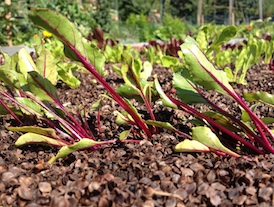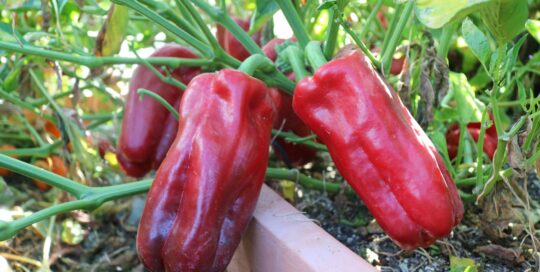Checklist for Vegetable Garden Maintenance
Views: 4175

The end of June and beginning of July is a time of general maintenance. It’s the “plugging along” time in the for the vegetable garden.
In fact, vegetable gardening is like going on a 5-hour road trip to Grandma’s house for Thanksgiving. There’s the business of packing up the car, the equivalent of the spring rush to planting. Then there’s the 20 minutes or so that it takes to get from your house to the highway along windy roads, including stopping for gas—this is the fertilizing, addition of cages, trellises and mulch, and a few adjustments to your crops.
Then it’s the highway and you are cruising along. You look in your mirrors, keep up with the flow of traffic. In garden speak, this is the general stuff you keep up with several times a week.
Here are some of the general maintenance items I keep on my mental checklist each time I go into the garden during the summer:
Weed your Vegetable Garden
I make sure there’s a nice layer of mulch around all of my plants. This helps with keeping weeds down, and it really helps you notice the weeds once they start growing.
Dead and dying leaves
Removing dead and dying leaves means removing dead material that could a) become a home for insect pests, b) spread whatever disease that may have caused it to die, and c) just make your garden look messy.
Thinning
Although I REALLY don’t like doing it, if my row of seedlings is too crowded and it seems that removing some of the smaller ones would help speed their growth, I get in there and thin them out. On the plus side, you could keep some of the seedlings you thin out and put them in a salad.
Suckering
Suckering is the removal of the “branch” that starts growing in the axis between the main stem and a leaf of a tomato. Suckers can sap energy from the tomatoes that start to grow further up the plant, making them a bit smaller. Suckers also can make plants a bit unwieldy, difficult to keep caged properly. And removing these “suckers” can just make the plant look more tidy. I start “suckering” the tomatoes when they are about 18 inches tall, and then I keep up with this task about once a week.
Fertilizing your Vegetable Garden
I fertilize my garden with Neptune’s Harvest 2-3-1 fish-seaweed blend. I’ve used it just twice so far, applied every other week. Give me a month and I’ll report back on how it’s working for me.
General observing
Take the time to look at your plants and notice any changes. Does that yellow spot on the leaf change into something with a black circle in the middle? That could mean disease. Are there marks on the zucchini vines? That could be a pest drilling its way in.
Meet Ellen Wells
When you’re raised on a farm, you can’t help but know a thing or two about gardening. Ellen Wells is our expert on edible gardening.…
Ellen's Recent Posts

Pepper Red Impact an All-America Selections Winner






